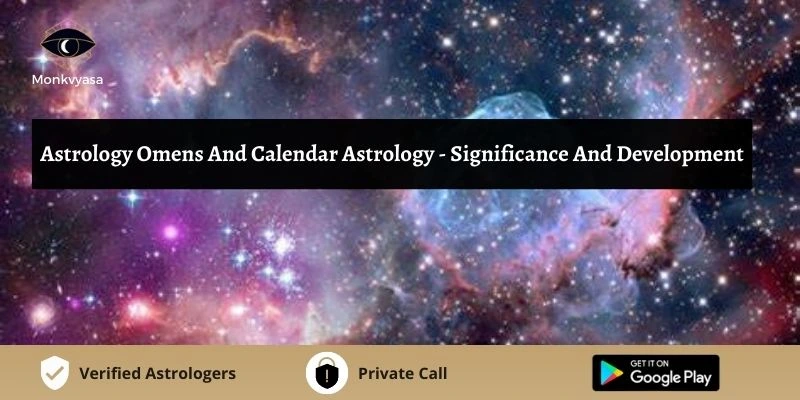

To comprehend the astrological concept of Omens, one must first understand the birth and the ancient world of Astrology. The archaeological remains of Babylonia’s ancient cities contain in-depth details and comprehensive records of the origins of Astrology. This region contains the world’s oldest astrological tablets, dating back to 2400 BCE. The practice of observing and recording celestial body movements and effects began here.
Babylonian astrology is also the foundation for Egyptian and Greek astrology. Most Babylonian astrological frameworks are still used in Western astrology today. Indeed, Babylonian Astrology was the world’s first organized astrological system, emerging in the second millennium BC.
Terrestrial events are intertwined with supernatural influences. Astrology and the birth chart support this claim, claiming the presence of omens during a person’s birth.
Omens are signs that foretell the future and also indicate the arrival of change. Omens are widely believed to be divine messages from the gods. Astrologers use these omens to forecast what will happen in a person’s life.
Different cultures or individuals interpret the same sign or indication in various ways. Astrology has the ability to predict future events based on planetary transitions and other celestial cycles that occur during a person’s birth.
Babylonian astronomers were among the first to observe the heavens and map the paths of celestial objects. Omens played an important role in ancient Mesopotamian culture and religious life. Both cultures were convinced that these omens were direct messages from their deities.
Complete omen details were also developed along the lines of predicting astronomical events. The planets were regarded by the Babylonians as messages and celestial representations of the gods rather than as gods themselves.
Also Read: Hellenistic Astrology.
Cuneiform script is an ancient writing system found on clay tablets in Mesopotamia and Persia. Enuma Anu Enlil, the God of the Sky and the God of Weather, are a set of clay tablets written in Cuneiform script that detail celestial events and omens.
Mesopotamia also records the movements of the Sun, Moon, and other eclipses in Enuma Anu Enlil over centuries. This information and planetary weather are useful in modern astrological analysis to predict future events. The primary aspects of modern astrology are symbolic interpretations based on astronomical observations.
With the advancement of astrology and the need to keep track of the time of birth in order to make accurate predictions, keeping a time cycle became critical. Various cultures developed precise systems for calculating and predicting time cycles, paving the way for the development of astrological calendars.
The motions of celestial bodies, as well as the Sun and Moon, aid in the creation of various calendars. The counting of days was based on the phases of the Moon, and the lunar month was born. When the concept of seasons entered the counting system, man was able to calculate the number of days between seasons. This was the result of the Sun’s movements. As a result, the Solar year and calendar were created.
In colder countries, where the arrival of winter was the most important factor in human activity, solar calendars were used. Because most travel occurred at night in hotter regions, the lunar calendar became useful. Because of the warmer climate and frequent sky gazing, tropical countries used lunisolar calendars.
This is the source of the Roman calendar, which brings us closer to the solar year. The lunar calendar provided extra months for adjustments. This calendar by Julius Caesar is three months behind the seasons according to Caesar’s time.
This concept is based on the Babylonian astrological system and combines both solar and lunar cycles. There were 29 or 30 days per month, with an extra day on alternate months. This was also necessary to keep the solar year in balance.
Compiling calendars is a genuine attempt to predict and record the passage of time, as well as study its effects. The only time units available are the day and the month. The most mysterious aspect of human existence is outer space. As a result, the study of celestial objects is central to astrology, astronomy, and various astrological calendars. To know more about Omens and Calendar Astrology talk to our best Astrologers.
Follow us on Instagram and Youtube for more Astrological videos.